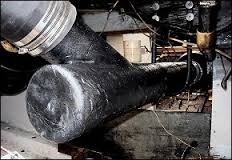nemier
Senior Member
Our N62 Nordhavn is somewhat unique,,, keel cooled, wet exhaust.
Best of both worlds in my opinion.
As you can see though,,, there are many opinions/experiences out there,,, and they all make sense. You just have to individually choose which keeps your powder dry.
However, my final input,,,If I ever get to build a N76, it will be twin engined, keel cooled, wet exhaust.
Best of both worlds in my opinion.
As you can see though,,, there are many opinions/experiences out there,,, and they all make sense. You just have to individually choose which keeps your powder dry.
However, my final input,,,If I ever get to build a N76, it will be twin engined, keel cooled, wet exhaust.








